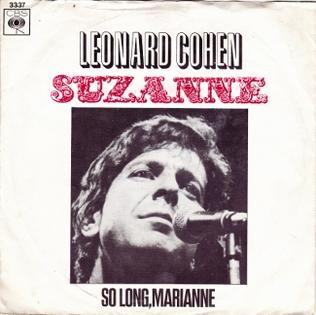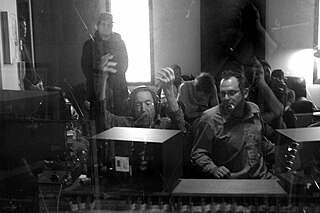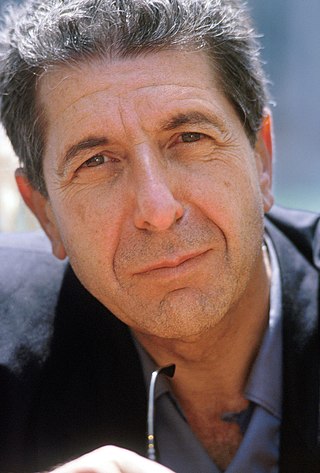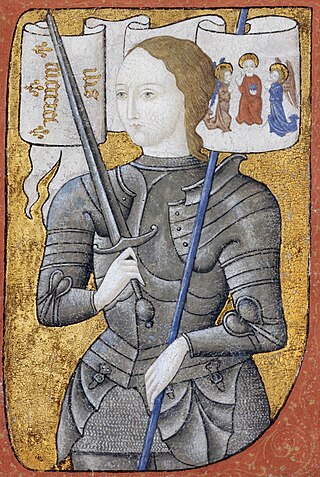Related Research Articles

Songs of Leonard Cohen is the debut album by Canadian singer-songwriter Leonard Cohen, released on December 27, 1967, on Columbia Records. Less successful in the US than in Europe, Songs of Leonard Cohen foreshadowed the kind of chart success Cohen would go on to achieve. It reached number 83 on the Billboard 200. It peaked at number 13 on the UK Albums Chart, spending nearly a year and a half on it.

Death of a Ladies' Man is the fifth studio album by Leonard Cohen, produced and co-written by Phil Spector. The album was in some ways a departure from Cohen's typical minimalist style by using Spector's Wall of Sound recording method, which included ornate arrangements and multiple tracks of instrument overdubs. The album was originally released in the US by Warner Bros., and on CD and the rest of the world by Cohen's long-time label, Columbia Records.

The Future is the ninth studio album by the Canadian singer-songwriter Leonard Cohen, released in 1992. Almost an hour in length, it was Cohen's longest album up to that date. Both the fall of the Berlin Wall and the 1992 Los Angeles riots took place while Cohen was writing and recording the album, which expressed his sense of the world's turbulence. The album was recorded with a large cast of musicians and engineers in several different studios; the credits list almost 30 female singers. The album built on the success of Cohen's previous album, I'm Your Man, and garnered overwhelmingly positive reviews. The Future made the Top 40 in the UK album charts, went double platinum in Canada, and sold a quarter of a million copies in the U.S., which had previously been unenthusiastic about Cohen's albums.

Recent Songs is the sixth studio album by Leonard Cohen, released in 1979. Produced by Cohen alongside Henry Lewy, it was a return to his normal acoustic folk music sound after the Phil Spector-driven experimentation of Death of a Ladies' Man, but now with many jazz and Oriental influences.

Ten New Songs is Leonard Cohen's tenth studio album, released in 2001. It was co-written and produced by Sharon Robinson. It was produced in Cohen's and Robinson's home studios in Los Angeles. It was also his first album in nearly 10 years. The album peaked at #143 on the Billboard 200, #4 in Canada, #1 in Poland and #1 in Norway.

Various Positions is the seventh studio album by Leonard Cohen, released in December 1984. It marked not only his turn to the modern sound and use of synthesizers, but also, after the harmonies and backing vocals from Jennifer Warnes on the previous Recent Songs (1979), an even greater contribution from Warnes, who is credited equally to Cohen as vocalist on all of the tracks.

New Skin for the Old Ceremony is the fourth studio album by Leonard Cohen, released in 1974. On this album, he begins to evolve away from the rawer sound of his earlier albums, with violas, mandolins, banjos, guitars, percussion and other instruments giving the album a more orchestrated sound. The album is silver in the UK, but never entered the Billboard Top 200.

"Suzanne" is a song written by Canadian poet and musician Leonard Cohen in the 1960s. First published as a poem in 1966, it was recorded as a song by Judy Collins in the same year, and Cohen performed it as his debut single, from his 1967 album Songs of Leonard Cohen. Many other artists have recorded versions, and it has become one of the most covered songs in Cohen's catalogue. In 2021, it was ranked at No. 284 on Rolling Stone's "Top 500 Greatest Songs of All Time".

Donald William 'Bob' Johnston was an American record producer, best known for his work with Bob Dylan, Johnny Cash, Leonard Cohen, and Simon & Garfunkel.
Patricia Mary O'Callaghan is a classically trained Canadian singer. She is a soprano who has built an international reputation as a performer of contemporary opera, early 20th-century cabaret music and the songs of Leonard Cohen.

Perla Batalla is an American vocalist, composer and arranger who first gained international attention as a backup singer for Leonard Cohen before embarking on a solo career at his encouragement. Her debut album, Perla Batalla, was released on Discovery Records in 1994. She formed her own record label, Mechuda Music, and released the album Mestiza in 1998, making sales through her website. Discoteca Batalla (2002) was recorded as an homage to her parents' record shop of the same name. In 2005, Batalla recorded a tribute album to Cohen, titled Bird on the Wire, and featured in Hal Willner's Cohen tribute concert film, Leonard Cohen: I'm Your Man.

Adam Cohen is a Canadian singer-songwriter. As a recording artist, he has released four major label albums, three in English and one in French. His album We Go Home was released on September 15, 2014. Currently residing in Los Angeles, he is also part of the pop-rock band Low Millions from California.
Sylvie Simmons is a London-born, California-based music journalist, named as a "principal player" in Paul Gorman's book on the history of the rock music press In Their Own Write. A widely regarded writer and rock historian since the late 1970s, she is one of the few women to be included among the predominantly male rock elite. Simmons is the author of a number of books, including biography and cult fiction. Simmons is also a singer-songwriter, ukulele player and recording artist.

Leonard Norman Cohen was a Canadian singer-songwriter, poet, and novelist. Themes commonly explored throughout his work include faith and mortality, isolation and depression, betrayal and redemption, social and political conflict, and sexual and romantic love, desire, regret, and loss. He was inducted into the Canadian Music Hall of Fame, the Canadian Songwriters Hall of Fame, and the Rock and Roll Hall of Fame. He was invested as a Companion of the Order of Canada, the nation's highest civilian honour. In 2011, he received one of the Prince of Asturias Awards for literature and the ninth Glenn Gould Prize.

"Joan of Arc" is a song by Canadian singer-songwriter Leonard Cohen. It was released as a single in March 1971 from his third album, Songs of Love and Hate. The song lasts almost six-and-a-half minutes, and is composed of four stanzas of eight lines each with a "la-la" refrain.

Live in London is a (double) live album by Canadian singer-songwriter Leonard Cohen. It was released on CD by Columbia/Sony March 31, 2009, is his 18th album, and his first live release since Field Commander Cohen: Tour of 1979 in 2001. A DVD of the performance was simultaneously released by Columbia/Sony.
In January 2008, Leonard Cohen announced a long-anticipated world tour. It would be Cohen's first tour in 15 years.
Matador: The Songs of Leonard Cohen is the fifth solo album recorded by the Canadian singer Patricia O'Callaghan and was released by the Marquis Classics label in January 2012.
Broken Hearts & Madmen is an album of pop music, World music and Latin American music recorded by the Juno Award-winning Canadian chamber music ensemble the Gryphon Trio and the Canadian singer Patricia O'Callaghan that was released by the Analekta label in September 2011.

Marianne Christine Stang Ihlen was a Norwegian woman who was the first wife of author Axel Jensen and later the muse and girlfriend of Leonard Cohen for several years in the 1960s. She was the subject of Cohen's 1967 song "So Long, Marianne".
References
- 1 2 "The Gypsy's Wife by Leonard Cohen". setlist.fm. Retrieved 5 July 2014.
- ↑ "The Gypsy's Wife". Leonard Cohen official website. Archived from the original on 23 September 2013. Retrieved 5 July 2014.
- 1 2 Sylvie Simmons (2012). I'm Your Man: The Life of Leonard Cohen. McClelland & Stewart. pp. 330–. ISBN 978-0-7710-8042-5.
- ↑ Leonard Cohen (1979). "Leonard Cohen on The Gypsy's Wife, with live performance (1979)". YouTube -- a clip from "The Song of Leonard Cohen". Retrieved 5 April 2017.
- ↑ "Leonard Cohen on The Gypsy's Wife, with live performance (1979)" . Retrieved 5 July 2014– via YouTube.
- ↑ "Leonard Cohen Video of the Day: The Gypsy's Wife & Slowly I Married Her – 1979". One Heck of a Guy – The Other Leonard Cohen Website. Archived from the original on 14 July 2014. Retrieved 5 July 2014.
- ↑ "Tim de Lisle, "Who held a gun to Leonard Cohen's head?"". The Guardian (London). 17 September 2004. Retrieved 5 July 2014.,
- ↑ "The Gypsy's Wife 1979–1980". The Leonard Cohen Prologues website. Retrieved 5 July 2014.
- ↑ "Broken Hearts & Madmen". Analekta official website. Retrieved 5 July 2014.
- ↑ "Matador: The Songs of Leonard Cohen". Marquis Classics website. Retrieved 5 July 2014.
- ↑ "Duquende canta a Leonard Cohen" . Retrieved 5 July 2014– via YouTube.